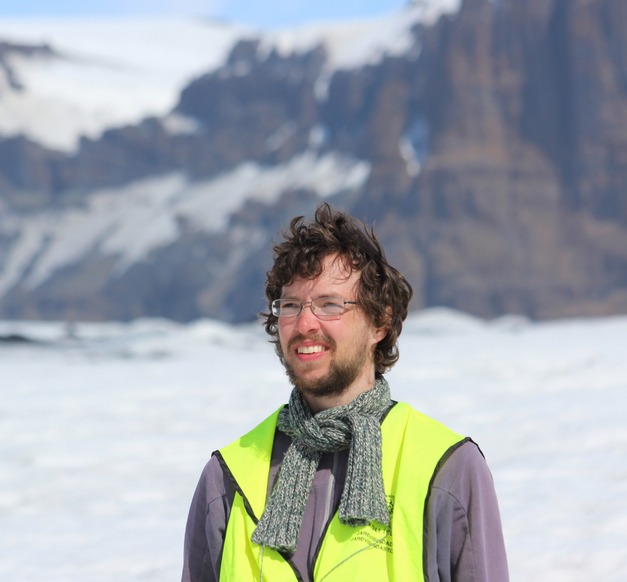Tayo van Boeckel, MS from the Faculty of Earth Sciences
Breiðarmerkurlón lagoon is one of the most special and beautiful places in Iceland, where icebergs float around on the blue-green surface as they make their leisurely trip to the ocean. An increase in the number of icebergs has been expected as a consequence of global warming. The perceived reason is that Breiðamerkur glacier, the source of icebergs for the lagoon, is moving at a higher speed towards the ocean as a result of the increased amount of water flowing under the glacier.
The Dutch scientist Tayou ban Boeckel has studied the speed of the movement of Breiðamerkurjökull. Glaciologists at The Institute for Earth Sciences have recently measured its surface speed using very accurate GPS equipment.
Tayo van Boeckel
“In my study I try to get to the bottom of how the rain- and melting water under the glacier influences the speed we measure on the surface.”

“The glacier flows from Vatnajökull Glacier like a thick liquid, and actually rushes at a speed which is around one metre per day,” says van Boeckel.
“Using these measurements we wanted to see if Breiðarmerkuljökull Glacier flowed faster as the climate got warmer; leading to a thinning of the glacier and an increase in the number of icebergs in the lagoon. The result would be that the glacier will recede and seal level rise,” says van Boeckel.
He says that the flowing forth of glaciers is mostly caused by melting – and rain water that flows under the glacier and causes it to slip on its foundation, similar to when a person loses balance on slippery ground. “In my study I try to get to the bottom of how the rain- and melting water under the glacier influences the speed we measure on the surface.”
This young scientist says that the melting increases as the climate gets warmer, and an increased amount of water thus flows under the glacier. “It is easy to imagine that this increase in water leads to an increased velocity in the glacier. On the other hand my study confirms the results of other research which shows that increased melting water does not necessarily lead to an increased speed of flow”. Part of the explanation according to van Boeckel is that when there is large scale melting with large amounts of water flowing under the glacier melts channels into the ice where the water flows faster away from the glacier. This means that instead of spreading over a large area causing the glacier to slide the water flows away through ice tunnels. This means that the increased amount of water does not necessarily mean an increase in the velocity of the glacier’s flow.
“This study confirms that we still do not understand various important processes in glaciers. If we want to better predict how glaciers recede and sea level rises, studies such as this one are essential,” says van Boeckel.
Supervisor: Alexander Jarosch, scientist at the Institute for Earth Sciences


